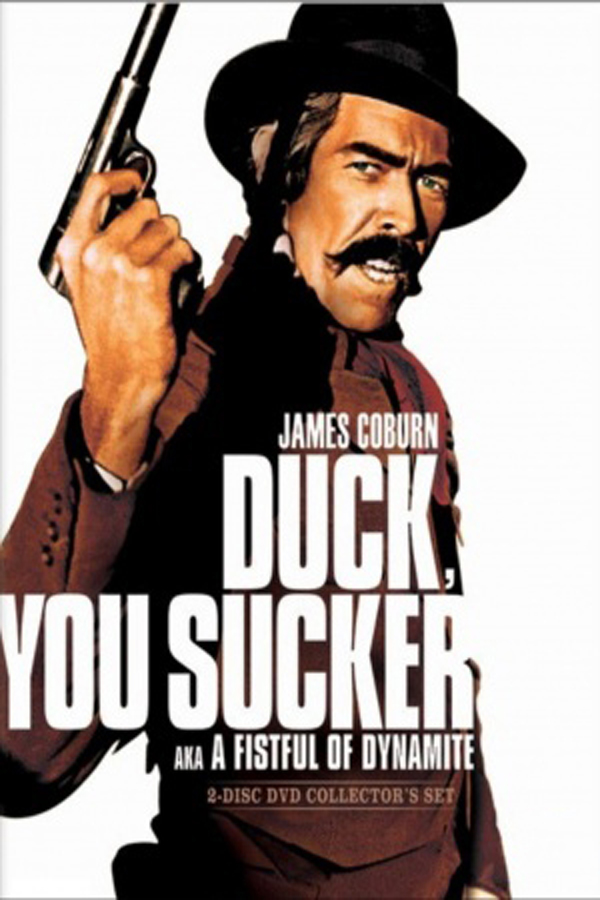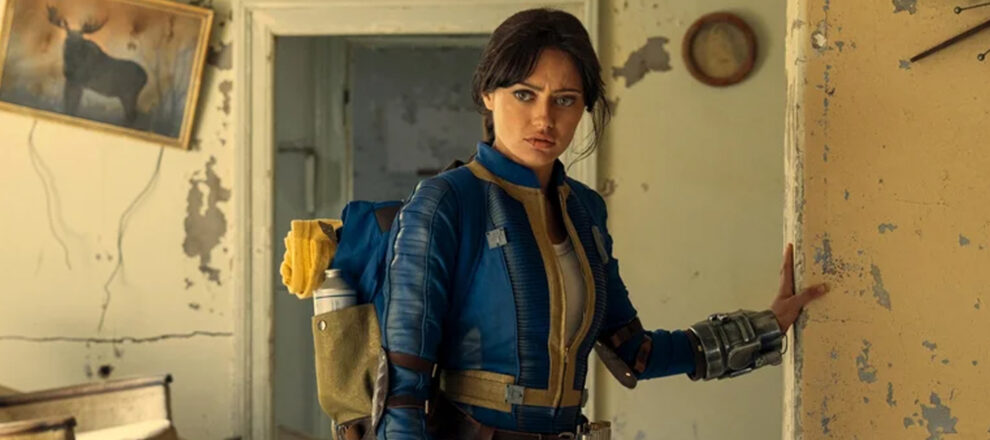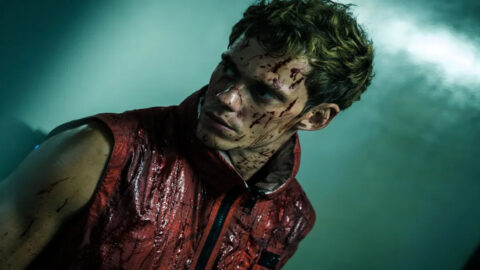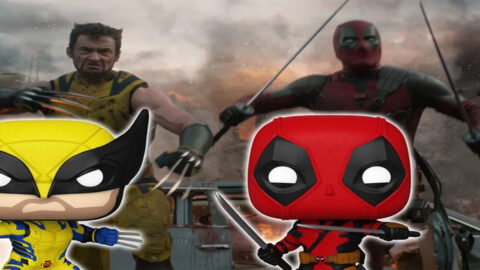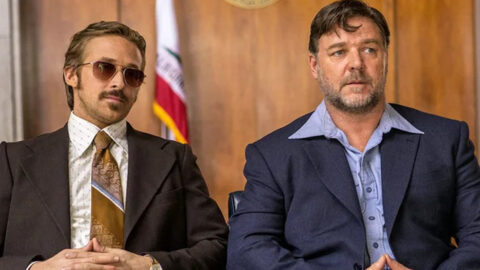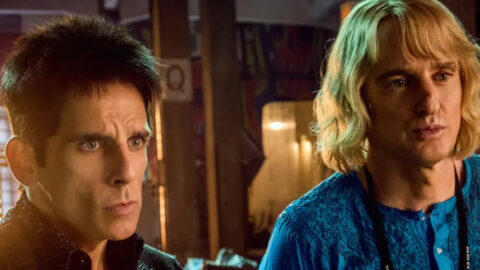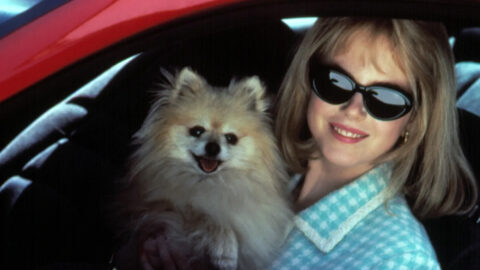By Valerie Ettenhofer
In its first season, Prime Video’s adaptation of the hugely popular video game series “Fallout” follows several heroes and villains who are still working to understand what’s real in their worlds. Walton Goggins’ movie star character, Cooper Howard, slowly comes to realize that America is making up an apocalypse to sell back to itself, while Brotherhood of Steel squire Maximus quickly learns that the powerful men he idolized as a kid aren’t all they’re cracked up to be. It’s Ella Purnell’s Vault-dweller Lucy, though, who gets the biggest reality check when she leaves her underground dwelling to explore a ruthless world with no place for the chipper sense of entitlement she was taught to convey.
Given the themes of the series, it’s fitting that it’s just as hard to tell what’s real and what’s not behind-the-scenes of “Fallout” as it is in front of the camera. “We got the footage back after the first day, and we couldn’t tell where the practical set ended and the virtual one began,” the show’s visual effects supervisor, Jay Worth, told FX Guide. Though the series shot much of its action in places like Utah and Namibia, much of the series was also enhanced through the use of massive, immersive LED digital sets known as volumes.
Made popular by “The Mandalorian” and the works of Industrial Light & Magic, digital volumes have taken Hollywood by storm in recent years. “Fallout” employed LA-based company Magnopus (who worked with Fuse Technical Group and MBS Group) to make the show’s giant digital screens, which were built during the COVID-19 pandemic with the help of 37 Magnopus employees and the show’s art and visuals departments. The coordination between two distinct departments is apparently rare, per FX Guide, as was the pristine 35mm film final product. Unlike other productions using the giant, dynamic 3D sets, “Fallout” didn’t require much post-production adjustment to its initial volume-provided footage.
“I thought I was going to be looking at a f***ing green screen for nine months,” Goggins told IGN in the outlet’s “Fallout” cover story. “It’s not. They built it. It’s all tactile, it’s all tangible, man.” Indeed, behind-the-scenes photos of the “Fallout” set (as seen above) are almost dizzyingly realistic. A scene featuring an airship carrying members of the Brotherhood of Steel is revealed to be shot on a soundstage thanks only to various lights and rigging visible above a background that looks like an actual desert landscape. A shot of the set used in the show’s season finale features a post-apocalyptic skyline, but the 3D assets blend seamlessly into the foreground to the point that it’s tough to tell if one crumbling section of wall is a prop or a virtual image.
The underground vaults in which Lucy and other super-sheltered apocalypse survivors live also employed volumes from Magnopus, but viewers are meant to notice some of them for themselves in the show. Oddly bright and vibrant shots of corn fields form a backdrop to vault 33, and on closer inspection, it’s clear that they’re virtual backgrounds meant to evoke the feeling of a summer’s day in Nebraska. They’re uncanny and obvious by design, unlike other volumes that mostly disappear into the background of some of the show’s most memorable shots.
The “Fallout” soundstages create impressively realistic backdrops for the show’s post-apocalyptic action, but one bit of CGI is slightly more noticeable: The Ghoul’s nose, or lack thereof. As an irradiated survivor of nuclear bombing kept in one piece by mysterious vials of liquid, Goggins’ character has a dark hole in the spot where his schnozz once was. A recent featurette from Prime Video titled “Walton Goggins Becoming the Ghoul” includes a quick shot of Goggins on set, which reveals that his nose was entirely digitally erased. The CGI is noticeable if you stare right at the void where the Ghoul’s now-rotted nose once was, but that’s pretty tough to do without feeling a hint of squeamishness and unease.
Despite the obvious use of CGI on the Ghoul, much of Goggins’ look was achieved practically, with the help of a makeup team led by prosthetic department head Jake Garber. Garber was nominated for an Oscar for his work on “Star Trek: First Contact,” and has worked on everything from “The Walking Dead” to “Creepshow” to “The Righteous Gemstones” (where, yes, he designed Goggins’ Baby Billy makeup). “Jake Garber is one of the best special effects makeup artists in the world,” Goggins says in the featurette, while a time-lapse video of his transformation into The Ghoul plays. Fans don’t get to see every step of the process, but they do see Goggins’ hair covered by bald cap-like prosthetics before Garber adds layers of heavily scarred fake skin all the way down to Goggins’ shoulders.
Executive producer Jonathan Nolan is no stranger to complex visual and practical effects after co-creating “Westworld,” and in the Prime Video featurette, he seems impressed with the level of versatility to Goggins’ prosthetics. “”The makeup was thin enough that you could still see all of the expressiveness of his performance, but also textured and real enough to capture the look and feel of the Ghoul,” the filmmaker and longtime “Fallout” fan explained. At one point, the makeup got a bit too real for Goggins’ own comfort. As he told IGN, he once took a nap in front of a mirror in his trailer while shooting in Namibia, and startled himself when he awoke to see his own face. “I was like, ‘Oh my god! Gn!'” he told the outlet. “I scared the s*t out of myself, is what I’m saying.” Now that’s movie magic in action.
